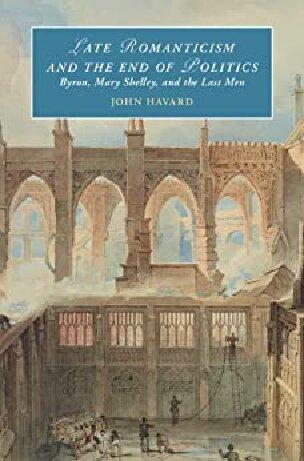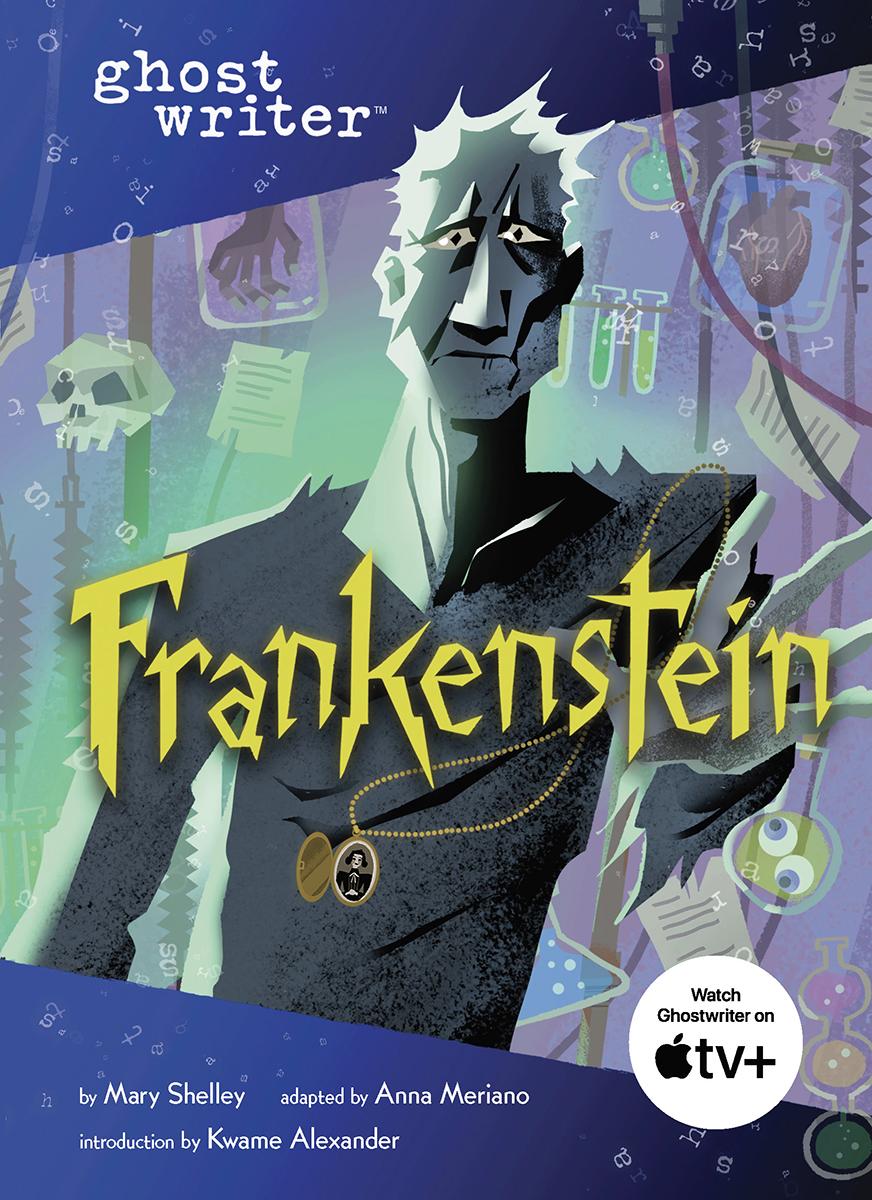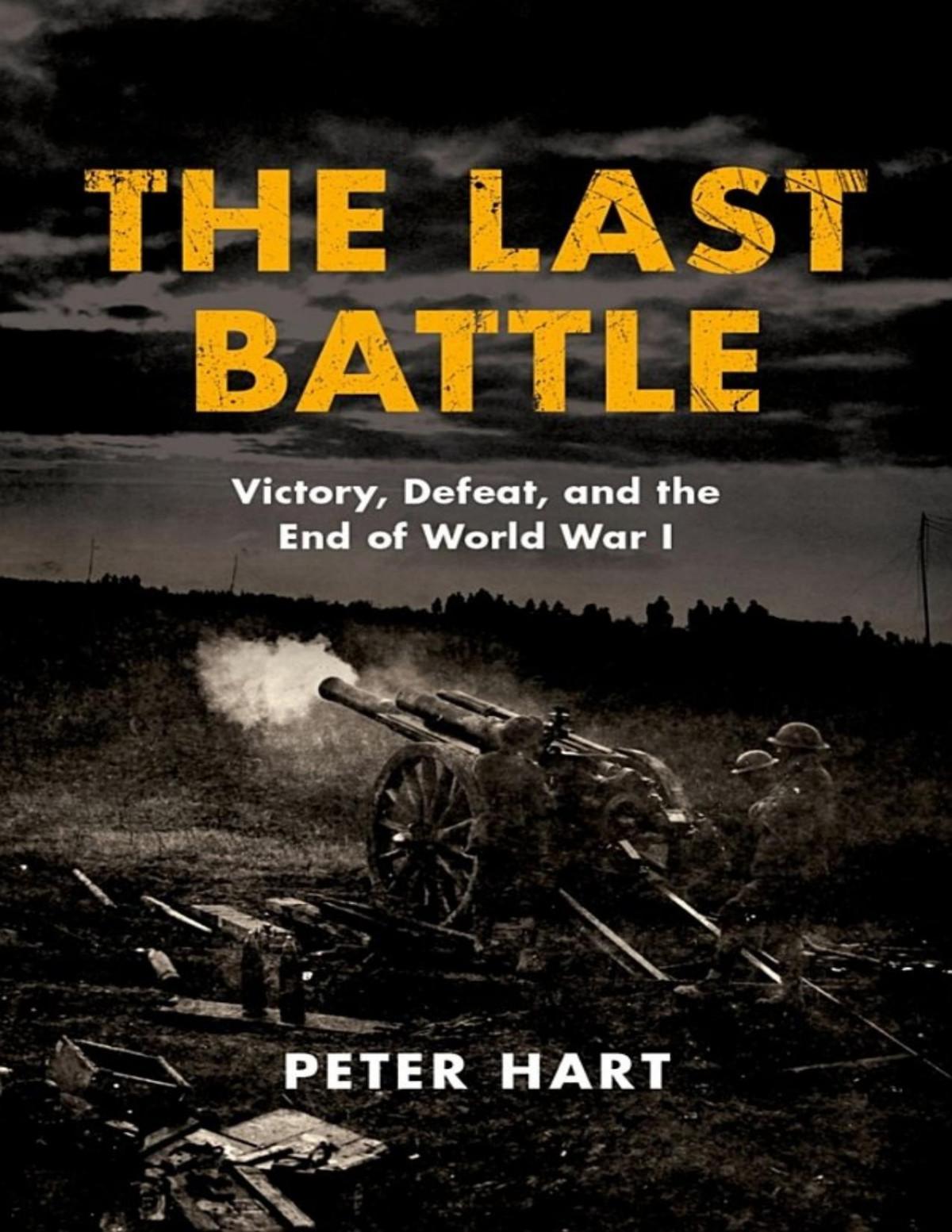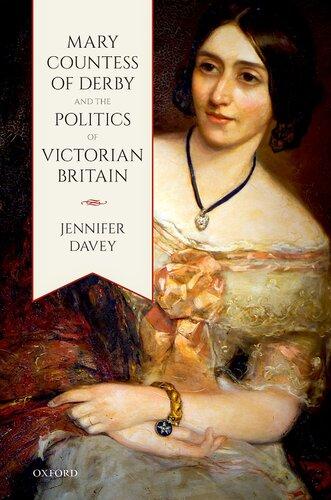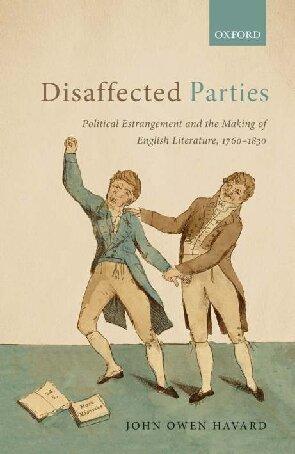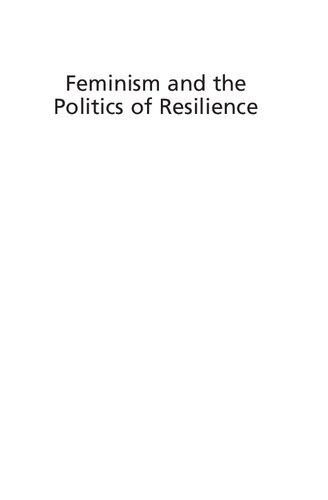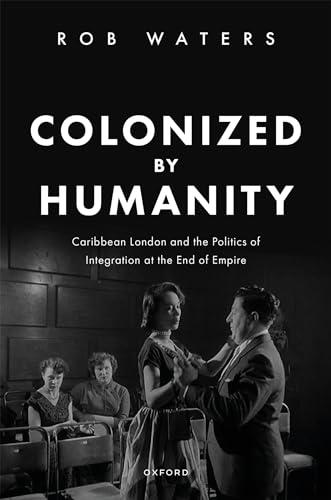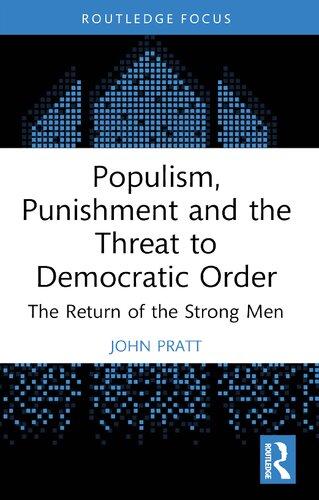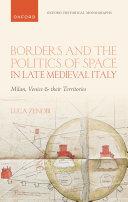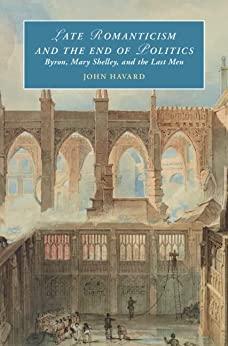Acknowledgments
Hownice – andhowstrange! – torecallthecircumstancesthatproduced thisbook.
First,thewomen.PennyFieldingofferedawarmwelcomeinEdinburgh andenquiredbrightlyabout “Darkness.” ClaireConnollykeptusuplate talkingaboutfunerals.EmilyRohrbach,theRomanticist’sRomanticist, offeredsteelysupportandfriendshipfromadistance.JessieReederhas beenmylifelinetotheVictorianage.StephanieDeGooyerismycorrective lens.SandraMacphersonisstillthebest.AbiWardandKathleenFearn broughtprecisionandkeenintelligencetothe finalmanuscript.Liz ArmstrongandthemammalsoftheLagunadeSanIgnaciogaveme ablissfulweeknotthinkingaboutthisbookasIreachedthelaststages. MymumputmeupwhenIwasgettingstarted.Oneday,wewillallgoto thepub.
JimChandlerandI firsttalkedaboutthisproject fivesummers(and five longwinters)ago.Itisanhonortobejoiningthisseriesandtobepartof thescholarlyworldithasmadepossible.IthinkofLaurenBerlantwhen IreadByron’sremarkson “ourearthquakes – ourpolitics.” Reconnecting withJerryMcGanninBerkeleyhasbeenanunexpecteddelight:Weare notworthy!PeterMileurhasbeenahugesupport,ashaveJoeKeithand therestofmytreasureddepartment.FromChicagotoCaliforniato BinghamtonandbacktoCambridge(although,unlikeByron,theywisely neverletmein).Time flies.
IthankEmilyPaterson-Morgan,TriciaMatthew,JonathanKramnick, TobiasMenely,JasonMoore,andDiGildeaforopportunitiestoengage thequestionsItakeuphere.IoweMarkCanuelandJonMeebelated thanksforlasttime.
ThediscussionofSwiftin Chapter 1 incorporatesmaterialfrommy “Swift’sPoliticalClimates,” forthcomingin TheEighteenthCentury: TheoryandInterpretation.The firstsectionof Chapter 5 drawsonmy “WhatFreedom? Frankenstein,Anti-Occidentalism,andEnglishLiberty,” vii
Nineteenth-CenturyLiterature 74.3 (2019): 305–31.Severalparagraphsin Chapter 3 arefrommy “‘Blustering,Bungling,Trimming’:Byron, Hobhouse,andthePoliticsof DonJuan CantoI,” TheByronJournal 49.1 (2021): 29–41.
Ithanktheanonymousreviewersofthisbookforreportsthatwere modelsofencouragement,support,andcare.AtCambridgeUniversity Press,BethanyThomashasbeenapleasuretoworkwith,ashasGeorge Laver.
Myfriendsmeantheworldtome.Ihopetheyknowwhotheyare.Igive specialthankstoBradAnderson,BenBateman,andBenStevermanfor loveandencouragementonbothsidesoftheAtlantic.ChuckandAlyse spreadthelovefromTexas.HughandSelga – andthetinkers – remainmy anchors.
Lastandnotleast,Ithankmyman,NathanVernon.Iwasluckyto spendthestrangetimesinwhichIwrotemuchofthisbookwithhim – and Blemie,nowinthatplacewhere “inthelongevenings” thereare “amillion fireplaceswithlogsforeverburning.” Itakesomesolaceinthisandother lossesimaginingsomeotherworldwhere “onecurlsoneselfupandblinks intothe flamesandnodsanddreams,rememberingtheoldbravedayson earth.”
Abbreviations
BLJByron’sLettersandJournals,ed.LeslieMarchand, 12 vols. (London:J.Murray, 1973–82).
CPWCompletePoeticalWorks,ed.JeromeJ.McGann, 7 vols. (Oxford:OxfordUniversityPress, 1980–93).
Hansard Hansard,UKParliamentOnline.
JMSTheJournalsofMaryShelley, 1814–1844,eds.PaulaR. FeldmanandDianaScott-Kilvert, 2 vols.(Oxford:Oxford UniversityPress, 1987).
LM MaryShelley, TheLastMan,ed.AnneMcWhir (Peterborough:Broadview, 1996).
LMSTheLettersofMaryWollstonecraftShelley, 3 vols.(Baltimore: JohnsHopkinsUniversityPress, 1980).
ODNB OxfordDictionaryofNationalBiographyOnline.
WhereWillItEnd?
HenryBroughamhadlittletimefor “thoughtlessoptimists” whenitcame topolitics.Writingforthe EdinburghReview in 1818,hepraisedarecent bookthatadvocatedforemigrationtotheUnitedStates.Broughamwas awedbyMorrisBirkbeck’saccountofthescaleanddynamismofthenew nation. “Abroad,deep,andrapidstreamofpopulationisrunningconstantlytowardsthewesternpartsoftheContinent,” hewrote,casting emigrationasaforceofnature.Heobserved,dubiously,that “ vaststates ” wereforming “towardsthePacificOcean,thegrowthofwhichasmuch exceedsinrapiditywhatwehavebeenwonttoadmireontheshoresofthe Atlantic.” Allthisleftatan “immeasurabledistance” the “scarcelyperceptibleprogressofourEuropeansocieties.” ItwaslittlewonderthatEngland hadbeenleftbehind.Ravagedbypovertyandausterity,Birkbeck’sbook hadsuggested,thebeleaguerednationwasheadedforpoliticaldisaster.An Englishfarmer(liketheland-bound villeins “ofoldtime”)had “novoicein theappointmentofthelegislatureunlesshehappenstopossessafreehold offortyshillingsayear.” With “noelectivefranchise,” hecould “scarcelybe saidtohaveapoliticalexistence” andhadnoconcernwith “publicaffairs.” Itwasthus “quitereasonableandjusttosecureatimelyretreatfromthe approachingcrisis – eitherofanarchyordespotism.” America’spopulation wasexploding,whileEnglandfaceddeclineandevencatastrophe.But where,Broughamasked,was “thisprodigiousincreaseofnumbers,this vastextensionofdominion,toend?”1
AnticipatingAlexisdeTocquevilleadecadelater,Broughamclaimed thatpoliticswaslessofadistractioninAmerica.Menhad “abundant occupationoftheirown,withoutthinkingoftheState.” Butthesuccessof theUnitedStatescouldalsobeattributedtosomethingelse:its “total want ” ofafamiliarbreedofpolitician. “Theraceofmerestatesmen,” Broughamwrote, “sowellknownamongusintheOldworld,iswholly unknownintheNew.” Therewasnoshortageofpoliticalfeeling;the Americanswere(“nodoubt”) “decidedpartisans,andwarmpolitical
combatants;butwhatprojectorchancecancounterbalance,intheireyes, thebenefitsconferredbytheUnion,ofcultivatingtheirsoil,andpursuing theirtrafficfreelyandgainfully,intheircapacityofprivateindividuals?” The “cautiousandeconomicalcharacter” ofthefederalgovernment seemed “admirablyadaptedtosecureitsholdovertheaffectionsof arationalandafrugalpeople.” Indeed, “untilthewholeframeofsociety alters,” Broughamventured, “evenagreatincreaseofpoliticalcharacters willnotenablethosepersonssuccessfullytoappealtothebulkofthe community,withtheprospectofsplittingtheUnion.” A “preacherof insurrection” might “safelybeleftwithsuchpersonagesastheAmerican farmers.”2
Wehavebecomemorefamiliar,intheyearssinceBroughamwrote,with theprospectthatestablishedpoliticalunionswillcometoanend.Inour ownmoment,long-standingdeclineandgrowinginequalityhavebeen met,onbothsidesoftheAtlantic,by “preacher[s]ofinsurrection” and explosionsofferventfeeling.Wehavebecomemorefamiliar,too,withthe prospect – ifnottheimpendingoralreadyunfoldingreality – thatthe worldasweknowitwillcometoanend.ThefantasiesaboutWestern supremacyandperpetualgrowththatshapedpreviouscenturiesnow confrontacutechallenges.Thisbooktookshapeintheshadowscastby thesedevelopments.Butitsemphasisfallsnotonlyondeclineandprospectivedisasterbutonhowclosinghorizonsandendinglinesprovide opportunitiestoreexaminethetargetsofgovernanceandtheobjectivesof politicalactivity:whatwemightcalltheendsofpolitics.In TheLastMan (1826),MaryShelleyimaginedapandemicthatdestroysthehumanrace,in whatcanbeconsideredthe firstend-of-the-worldnovel.Butincontrast withother fictionalapocalypses,thedissolutionofmankindbegins,in The LastMan,withthepeacefulunwindingofpoliticalinstitutions.In aversionofthedynamicdescribedinBrougham’sreview,thedwindling ofthepopulationrestoresEngland,inturn,toakindofquasi-rural existence,asvocalmalepoliticianssuddenlyvanishandnewcommunities takeshapeintherubble.3
ThisbookexamineswritingsbyLordByron,MaryShelley,andtheir circlethatconfrontedtheprospectoftheworldending,frompoemsby Byronthatpicturedfallenempires,sinkingislands,evacuatedplanets,and dyingstars,tothemakingandunmakingofpopulationsin Frankenstein and TheLastMan.Thosewritings,thisstudyshows,intersectedwithand enclosedreflectionsuponpoliticalchange.Whileovershadowedbythe past – notleastintheguiseofareconstitutedToryelite – thelateRomantic agesawlong-standingtensionscometogetherwithnewprospectsfor
politicalmobilizationandlegislativechange.Thisbookfocusesonthe periodbracketedbyBritain’ s 1815 victoryatWaterlooandthepassageof the 1832 ReformAct.Fromreformofparliamentandtheabolitionof slaverytotheascentofliberalidealsandfreetrade,politicsintheearly nineteenthcenturyunderwentconsiderableanddramaticchanges.My interest,however,islessintyingliterarytextstohistoricalspecificsthan inexploringliterature’sengagementwiththemultipletemporalitiesand vectorsofchangethat “politics” enfolded.4 Inearlynineteenth-century England,anewlydemocratic ethos (andliberal telos)promisedanendto politicsasusual.Thesepoliticalchanges – whichentailed,amongother things,profoundchallengestothestandingofelitepoliticalmen –amountedtoendings,whetherwelcomeorotherwise,thatwerealso freshbeginnings.Theyconverged,inthewritingsIexaminehere,with visionsoftheworldcomingtoanend.
The “endoftheworld” canmeanthefailureofinstitutionsandcollapse ofsociety,theendofthehumanspecies,theruinanddemiseofPlanet Earth,andthebiblicalApocalypsethatendshistoricaltime.Theseformulationsaredistinctbutoverlapping.Theycoincide(andclash)incomplex ways.Thecollapseofpoliticalandsocialinstitutions,forexample,may haveanegligibleimpactonnonhumananimalsandnaturalenvironments; indeed,fewerpeopleandlesshumanactivitymayhavebeneficialconsequencesforplanetarylifewritlarge.Approachedfromtheperspectiveof ecocriticism,environmentalism,or “theAnthropocene,” wehaveonlyone world:PlanetEarth.5 Butmorethanoneworldmaybeatissueintalkof the “endoftheworld.” Thedemiseofthisplanet,insomeversionsof evangelicalChristianity,hastenstheonsetoftheworldtocome.Rather than fixingthisplanet,meanwhile,sometechno-utopianfantasistshave focusedontheprospectofescapingtoMarsorthemoon,turningtheir backontheproblemsofthisworldinthepursuitofanother.Apocalyptic rhetorichasbecomeespeciallywidespreadindiscussionsofcontemporary politics. “Theonlythingthatistheendoftheworld,” BarackObama statedinthe finalweeksof 2016, “istheendoftheworld.”6 Whatwecall the “endoftheworld,” Obama’scommentsremindus,almostinvariably fallsshortofirrecoverablecollapse,letalonetheApocalypseofbiblical eschatology(the “EndoftheWorld” thatstructuredChristianthoughtin thepremodernWest).7 Yetcatastropheandworld-endingcontinueto infuseourperceptionofpresent-dayrealityandtoinflectourunderstandingofprospectivefutures.Thatmayresult,asObamaseemstoimply,in overblownanalogiesandaninflatedsenseofdoom.Recentdevelopments haveaccentuatedabeliefthatestablishedinstitutionsandexistingformsof
politicalagencyareexhausted.Thealreadyshakyclaimthatmankindhad reachedtheendofhistoryhasnowbeenfurtherdiscredited.Buttheclaim thattheendoftheworldisnighmightbesaidtohavetakenitsplace. Wherebefore,theonlywaywasup,orstraightahead,intoafantasizedstate ofirreversiblestasis – withthesupposedglobaltriumphofliberaldemocracy – now,theonlywayaheadcanseemtobeaseriesofsloworsteep declines,acceleratingandconvergingcatastrophes.
Claimsthattheworldisdoomedmaybenolessdubious – atleastin politicalterms – thanclaimsthatwehavereachedhistory’send.8 Inteasing aparttheseconvergingrhetorics,separatingoutthesevisionsoftheendof theworld,wenotonlymaintainasenseofproportion.Crisismayalso providepracticalopportunitiesandimaginativevehiclesforchange, promptingreevaluation,andopeningpathwaysforotherpossiblefutures. Thosefuturescan,ofcourse,amounttomoreofthesame – orworse.As NaomiKleinhasstringentlyargued,crisisaffordsspecialopportunityto vestedinterests,whoexploitdisorienting “shock” toentrenchinequitable systems.9 Nosanepersonwantstoseecatastrophe.YetasKleinhasalso shown,crisismayaffordtheopportunitytorevisitourpoliticalpriorities. Disasters,whethernaturalorman-made,mayreaffirmtheneedforlocal organizingandinternationalsolidarity,creatingnewpolitical,social,and economicorderswhilefurtherdiscreditingneoliberalcapitalismand relatedhegemonies.10 TheglobalresponsetoCovidpresentsarecent exampleoftheelusivepotentialnestedwithinunexpecteddisruption. Althoughplentyofpeoplewerestillforcedtogointowork,theonsetof thepandemicalsosawrelentlessactivityandglobalinterchangegivewayto somnolentstreetsandemptyskies.Indeed,theearlyphasesoflockdown witnessedtableauseerilyreminiscentofShelley’ s LastMan,asiconicsites fromtheVaticantoWallStreetfellsilentandanimalstookoverabandonedstreets,reclaimingaworldevacuatedofmankind.11 Literature,this bookargues,createsdisaster-freespacesofrethinking,inwhichtheworld canbeconfrontedandimaginedanew,whetherbywayoftheimpasses createdbysuddenrupturesandloomingabsencesorthroughmoresubtle changesandadjustments:tremorsofanticipatedtransformation, fleeting disruptionstothestatusquo, flickeringglimpsesofanalternativeworld.12 TheLastMan playsoutatlengthoneversionofwhatmighthappenwhen theworldasweknowitceasestobe.Bothinelaborateandmoreunderstatedways,allthewritingsdiscussedinthisbookcontemplatewhatmight resultfromdislodgingoruprootingthingsastheyare.Thatbeginswiththe politicalsystemsorganizedaroundindividualmen.
“Thisisnottheapocalypse,” PresidentObamatoldWhiteHousestaff membersthedayafterthe 2016 presidentialelection.13 Butdespitehopeful assertionstothecontrary,asenseofdread,decline,anddoomremained pervasivefortheremainderofthatdecade(and,itseemssafetosay,beyond). Recentevents,fromthevoteforBrexittotheelectionofTrump,hadshown thatpoliticalupsetsandtheabruptcollapseofcertainties – amidst agatheringwhirlwindofglobalupheaval,technologicalchange,anddisandmisinformation – couldfeelverymuchliketheendoftheworld.In The OriginsofTotalitarianism,HannahArendtshowedhowthecascadeofevents mightcoincidewithtorrentsoffalseinformationtowashawayanysenseof fixityandtruth,unleashingviolenceandterror.14 Inourowntime,the chaoticstateofpoliticshas(sotospeak)drownedoutandsuckedtheoxygen ofattentionawayfromenvironmentalcatastrophe.Partisanandideological divisionobscurecollectivepredicaments,distractingfromtheneedforlargescaleactioninthefaceofenvironmentalperil.Politicalfailurecanredouble feelingsofimpotence,givingrisetodepressionandhelplessnessrivalingthat ofonce-hopefulradicalsafterthefailureoftheFrenchRevolution.Butas thisbooksetsouttoshow,therearemanyendsoftheworld – each demandingthatwereimaginetheendsofpolitics.Literature,atthesame time,imaginesitsownworlds.Beyondtheirultimatepoliticalimplications, theendingsandfreshopeningsexploredheregiverisetomeditationson mankindanditslimits,includingthereorientationofperspectivesbeyond ourspeciesandthisworldaltogether – toalternativesourcesofmeaningor thebrokensolacethatcomesfromstaringintothevoid.Thewritingsof Byron,MaryShelley,andtheircirclewillnotoffersolutionstowhatailsus. Buttheyserveasapreludetomorerecenteffortstothinkandfeelourway throughanewlyhopeless-seeminghumancondition.Theyalsomakevaluablecontributionstothatundertakingintheirownright,asfusionsof politicalthoughtandliterarypoeticsabletoadminister,asKeatswroteof thescenessealedontheGrecianurn,tothose “inmidstofotherwoes.”15
Shelley’ s “Tale” andtheSpiritoftheAge
InFebruary 1825,MaryShelleyapproachedasittingmemberofparliament withamodestproposal. “Ihaveoftenwishedtobepresentatadebatein theHouseofCommons,” ShelleywrotetoMPJohnCamHobhouse. ExpressingparticularinterestinarecentdebatebetweenBroughamand GeorgeCanningoverapetitionsupportingCatholicrights,shestatedthat the “animateddiscussionsnowgoingon” and “thesplendideloquence displayed” were “beyondwordsobjectsofattraction.” Shelleyemphasized
hercapacitiesasanattentivelistenerofanimatedmeninthe 1831 introductionto Frankenstein.(“Manyandlongweretheconversationsbetween LordByronand[Percy]Shelley,” sherecalledofhertimeatLakeGeneva, “towhichIwasadevoutbutnearlysilentlistener.”)16 ButShelley’sletterto Hobhouse,whileostensiblydemure,wasalsoquietlyassertive.Attendance atparliamentwouldbeinvaluable,shewrote,forthe “Tale” atwhichshe wasthenatwork.Herletterconcludedbyconveyingherdesiretoattend the “strangersgallery” wherevisitorswerepermittedtoobserveparliamentarydebates: “Ihearthatthereisaplace,overtheroofofSt.Stephenswhere yousenatorspermitustohear,notseen.” Sheconcludedbyapologizingin advanceforseemingtooforwardinherrequesttovisitthehallowed chamberofEnglishpoliticsandtoviewitslofty “ senators. ”17
TheSpiritoftheAge appearedthesameyear.WilliamHazlitt’ sgroup portraitofthelateRomanticperiodfeaturedextendeddepictionsof Cobbett,Godwin,andWordsworth – tonamejusttheprominent Williams.Asthatsubsetofeminentmenmakesclear,Hazlittincluded figuresfromtheworldoflettersandfromtheworldofpolitics.Alongside SirWalterScottandotherliterarylions,Hazlittprofiledpolitical figures rangingfromGodwinandCobbetttotheagingradicalHorneTookeand theconservativeclericThomasMalthus. TheSpiritoftheAge alsoincluded shortersketchesofCanning,Brougham,theradicalstalwartSirFrancis Burdett,andtheevangelicalabolitionistWilliamWilberforce.Theopeningpagesof TheSpiritoftheAge referencedHobhouseasavigorous exemplarofpopular “hustings” politics.Thebookbeganwithaportrait ofJeremyBentham,presentedasapoliticalthinkerwhocasthiseyeson widehorizonsanddistantnations.Theportraitof “LordByron” had aspecialstatusinthecollection,whichappearedtheyearafterthepoet’ s deathinGreece.
In 1826,theyearaftertheappearanceofHazlitt’sbook,Shelleypublishedhernovelheraldingtheendoftheworld. TheLastMan,setinlate twenty-first-centuryEngland,witnessesthehumanspeciessuccumbto amysteriouswaveofglobalillness.ButtheopeningvolumeofShelley’ s novelhad,asIhavenoted,aprominentpoliticaldimension.Anticipatedin herdesiretovisittheHouseofCommons – thiswasthe “Tale” atwhich shewasatworkwhenshewrotetoHobhouse – thebookdepictsfactionsof “royalists,”“aristocrats,” and “democrats” contendingtoleadEngland aftertheabolitionofthemonarchy,whichthebookoptimisticallydates to 2073.Thefuturisticworldof TheLastMan alluded,inbothdirectand veiledways,tocontemporarypoliticaldebate,frombrewingargumentsfor parliamentaryreformandexpandedsuffragetothemoreradicalvisionsof
changeassociatedwiththeFrenchRevolutionandindependencemovementstakingshapeacrossEuropeandtheAmericas.Asidefromits engagementwithGodwinianradicalismandBenthamitereform – and itsglimpsesatthekindofmale-dominatedworldsfamiliartoShelleyand hermother,MaryWollstonecraft – thenovelincludescharactersbased directlyonPercyShelleyandByron. TheLastMan scrambledandrecombinedthesevariouselementsofthelateRomanticage,whichShelley exportedtoadistantfutureandpresentedagainstthebackdropofdramatic changestomankind’sstandingintheworld,amountingtotheendof “ man ” assuch.
Inthesecondhalfofthisbook,IofferareadingofShelley’snovelthat takesseriouslyitsattentiontopolitics.Twofeaturesofthatargumentmay beoutlinedhere.Inthe firstinstance, TheLastMan focusesonthelast men.TheopeningvolumeisovershadowedbytheByronicpoliticianLord RaymondandformerheirtothethroneAdrian,aneffeteidealistwho sharesfeatureswithPercyShelley.Anundulynarrowapproachtothenovel hasledcriticstobrushpasttheseearlyscenes.Butreadinmoreexpansive terms,theydrawourattentiontoasecondfeatureofthebook:thecomplex politicalresonancesthataccompanyitspictureofaworldwithoutmankind. TheLastMan invitesreadingsthatattendtouniversalsandcurrent preoccupations,withrecentinterpretationsemphasizingviralillness,interspeciescommunity,refugeecrisis,naturaldisaster,andapocalypse.Tobe sure,theultimatehorizonsofShelley’snovelstrayedfarbeyondpolitics. Butinleapingtototalizingframes,universalizingquestions,andcurrent concerns,criticshaveobscuredthepoliticaldimensionsof TheLastMan. Eventhenovel’saccountofaprepolitical,naturalstateanditsvisionsofan evacuatedplanet,Ipropose,havecomplexpoliticalimplications.
Nolessthan TheSpiritoftheAge thepreviousyear, TheLastMan drew togetherthecompetingimpulses,timeframes,andagendas – aswellas someofthespecificpersonalities – thatwerereshapingpoliticsinearly nineteenth-centuryEngland.Like TheSpiritoftheAge,thenovelengaged Godwin’spoliticalutopianism,Cobbett’spopulistrancor,Wordsworth’ s rusticidealism,andBentham’svisionsofthe “NewWorld.” Yetthenovel’ s overarchingnarrativeandthewiderthemeannouncedbyitstitlealsoleave uswithapuzzle.WhydidShelleymakethefulfillmentofcertainradical ambitions(anddebatesabouttheviabilityofpoliticalinstitutions,even aftertheirreform)thestartingpointforanovelconcernedwiththedemise ofmankind?Whyportrayrecentchangestotheendsofpoliticsin proximitytomankind’ s finaldaysonEarth? TheLastMan joinedwith otherworksbyMaryShelleyandByron,thisstudyargues,inimaginingthe
spiritoftheageasthesenseofanending.Thesewritingsandthewider print-politicalandcultural-affectivespheresinwhichtheytookshape countenancedvariousprospectsfortheendoftheworld,fromthedissolutionofinstitutionsandcollapseofsocietytothedemiseandextinctionof thehumanspeciestotheexhaustion(orconflagration)oftheplanet.These reflectionsonworldendingwereintertwined,thisbookproposes,with thinkingaboutthefutureofpoliticsattheoutsetofthenineteenth-century “AgeofReform.”18 Asthe firsthalfofthisbookemphasizes,thatbegan withthenutsandboltsofpolitics:parties,institutions,andlegislation, practicalreforms,radicalaspirations,andconservativereaction.Rather thanpointingonlytocatastrophe,encounterswithendsandendings couldbegenerative,pointingtothewaningimportanceofpoliticallineagesrootedinthepast(waningimportancethat,asweknowfromour ownexperience,doesnotprecludestubbornpersistence)orchallenging effortstosweepresistanceandunrestintoaburiedpast.Endingsoffered ameans,inparticular,toreflectuponthegainsandlossesassociatedwith thetransitionintoaneweraofliberalgovernance.Thesereflectionson comingtoanendacquirerenewedimportanceduringourowntime,as visionsofpoliticalandplanetaryend-timesconvergeonceagain.
Byron’sLastnessandtheEndoftheRace
Althoughthisbookisnot,forthemostpart,concernedwiththeAmericas, theearlyUnitedStatesofferssomeinstructivewaysofthinkingabout politicalmodernity.Inlocalhistoriesstartinginthe 1820s,JeanO’Brien hasdetailed, “NewEnglandersscriptedthemselvesasmodernpeople lookingtothefuture,creatingorderoutofchaosandforgingmodern societiesandculturesthatbrokefromthepast.” TheIndigenouspeoplesof thoselandshadnocontinuingplaceinthosestories,which “implicitly arguedthatIndiansandIndianwayscouldnotbeacknowledgedas legitimate,ongoing,andpartofthelandscapeofthefuture.”“Firsting” and “Lasting” becamecriticaltoolsinwhatO’Brien,adaptingBruno Latour,framesasabattleoverwhoandwhatgetstobe “modern.” James FenimoreCooper’ s LastoftheMohicans (1826)exemplifiedawidertendencytodwelluponthesupposed “LastofX” asameanstoconsign Indianstoapremodernoruncivilizedpast(andtoeraseorelidethe challengestheircontinuedpresenceposedtothisnewlyevacuated modernity).19 Inhis finalpublishedpoem, TheIsland (1823),Byron imaginedanencounterwithnativepeoplesthatevadedthesetendencies, Iargueinthisbook’ s finalchapter,byimaginingaworldinwhichEngland
and its institutionsnolongerexisted.In Frankenstein,Iargueinthesame chapter,ShelleyhadhercharactersretreattotheNorthPoleasasite beyondEuropeanditsruinouspoliticallegacies.Butbothauthorswere goingagainstthegrain.Inthecomingcentury,agrowingemphasison forwardmovementmadelittleroomforalternativetrajectories – an emphasisthatbecameespeciallyacuteinAmericaandrelatedimperial contexts.Apparentacrossa “broadcanvasofculturalexpressioninthe nineteenthcentury” andexemplifiedbysentimentalizedappealstodying races, “lastness” producedprogressnarrativesandracializedconceptionsof historicaltimethathelpedshapeafutureclosedofffromthepast.20
ThelateRomanticageinEnglandsawvariedandclashingvisionsofthe future.Inthelateeighteenthandearlynineteenthcenturies,aconcern withprogresswassharedbyphilosophers,historiographers,andthenewly emergentmasspublic.21 TheconjecturalhistoryoftheScottish Enlightenmenthadadvancedastadialtheoryforhumanadvancement. Buttheupheavaloftheglobalageofrevolutionsradicallyreconfigured –andevenexploded – existingprogressnarratives.22 WiththeFrench Revolution,ReinhartKoselleckwrites, “thepreviousworldofsocialand politicalexperience,stillboundupinthesequenceofgenerations,was blownapart.”23 DuringthelateRomanticageinEngland,overlapping groupsofactivists,artists,philosophers,andvisionariesremainedinvested inideasofhumanprogress.Thoseinvestments – whetherinflectedby philosophicalthinkingandconjecturalhistoryordrivenbyradicalhopes andpopularmobilization – wereboundupwiththepracticalbeliefthat politicscouldcontinuemovingforward:whatwewouldtodayrecognize, broadlyspeaking,asthetenetsofprogressivepolitics.Althoughindebted tothespiritofchangeinauguratedbytheFrenchRevolution(including self-described “Jacobins” andsuchgroupsastheLondonCorresponding Society),theearlynineteenth-centuryemphasisonforwardpoliticalmovementhadmultipleaxes,fromthe “marchofintellect” toevangelical abolitionismtoBentham’selaborationofGodwinianidealsintopractical agendasforreform.Demandsforparliamentaryreformhaddeephistories andcomplexlyoverlaidnetworkswhileantislaveryorganizingand demandsforabolitionweredrivenbyanexpansivetransatlanticcoalition, includingthewritingsofBlackAtlanticauthors.Politicsinthismoment wasdriven,thatistosay,notonlybystadialtheoriesortheworld-historical forceimputedtoeventsinFrancebutbydiverseactorsandheterogeneous networksengagingmultipletimeframesandvectorsofchange.
Reformistviewswerenotuniversallyheld,ofcourse,evenamongthose onthe “Whig” endofthepoliticalspectrum.Manyresistedthe
disintegrationofoldstructuresandtheusheringin,whethergradualor instantaneous,ofatransformedpoliticalfuture.Therewerealsothosewho fellintononeofthesecamps.The fi guresonwhomIfocusinthisbook tarriedaroundvisionsofthelastmeninandbeyondpolitics.Butthatdid notmeantheywerewhollyresistanttochange.Thesebackward-looking re fl ections,neitherfullyreactionarynorentirelyhostiletoprogress,were infusedwithanindeterminatepoliticalpromise.Thatwasthecase,this bookargues,forre fl ectionsbyandupononemaninparticular.The deathofLordByronin 1824 echoedlikeathunderclapthroughtheage memorializedbyHazlittthefollowingyear.Byron’sexilefromEngland andeventualdeathinGreecewerewidelydiscussedandmourned. ContemporaryrepresentationsestablishedByron’ sreputationdownto thisday,fromrakishdandyandearlycelebritytoglobe-trottingdilettanteandfreedom fi ghter.24 Hisdeathsawpersonaloutpouringsofgrief andtherenewalofscandal.ThelateryearsofByron’slifeandresponsesto hisdeathalsobroughthisimportanceasapolitical fi gureintorenewed focus.Hebecameasymbolofdoomedrevolutionaryhopes.Butwhat Byron ’slifelongcommitmentto “ opposition” wouldhavelookedlike, hadhelived,alsobecameanintriguingquestion.Lookingtoevents duringhislifetimeanddevelopmentssincehisdeath,writersdeveloped speculativeaccountsofByronlivingintosubsequentdecades.Those accounts – whichincluded fi ctionalizedtreatmentsofthepoet’ sfuture life – imaginedByronreturningtoEnglandtorevivehispoliticalambitionsorvoyagingelsewhereintheglobeandportrayedhim,variously,as aradicalreformerandpopulist fi gureheadorasanaristocraticrelicand politicaldinosaur(whohadturnedout,despitehisWhigcredentials, a “ Toryatlast,” ashehadjibedofRobertSouthey).Byron,forhisown part,remainedhauntedbyhisretreatfromWhigpolitics.Buthedidnot remainweddedtoanystaticpoliticalrole.Thepubliceffortstoimagine hispoliticalfutureechoedtheprivatewritingsandpersonalre fl ectionsin whichByronaskedwhathemighthaveaccomplishedpoliticallyby returningtoEnglandratherthanseekingoutrevolutionarymovements andotherhorizonsoverseas.
AsByronanticipatedinhis 1816 poem “Prometheus,” hebecame “ a symbolandasign” ofresistance.Buthiswritingsalsocaptureamore elusiveandambiguoussenseoffadedpossibilityandrenewedpotential. Bothtendenciescanbediscernedinoneofhis finalpoems.Writtenin January 1824,thepoemknownas “OnThisDayICompleteMyThirtySixthYear” hasbeenovershadowedbythefactthatByrondiedafew
monthslater.Inhis 1830 editionofByron’swritings,ThomasMoore presentedtheselinesasaliving,breathingrelic:
Takingintoconsiderationeverythingconnectedwiththeseverses, – thelast tenderaspirationsofalovingspiritwhichtheybreathe,theself-devotionto anoblecausewhichtheysonoblyexpress,andthatconsciousnessofanear graveglimmeringsadlythroughthewhole, – thereisperhapsnoproduction withintherangeofmerehumancomposition,roundwhichthecircumstancesandfeelingsunderwhichitwaswrittencastsotouchingan interest.25
Buttheclashingregistersofthepoem – inwhichByronwritesbothof fadingleavesandmoltenpassion – exceedthetermsofMoore’seffusive retrospectivereading,whichsurroundsthepoemwithahaloofpolitical hopeanddevotion.Byroncanequallybeseenapproachingwhatturned outtobehis finalbirthdayinaspiritofself-erasure,givingthepoem’sde factolastnesslesssettledsignificance.Revolutionaryhopegiveswayhereto steppingasideandlettinggo.
ByronhadtraveledtoGreeceatthebehestofhisvariouspoliticalcircles includingtheLondonGreekCommittee,Italianresistanceforces,andthe leadersofthestruggleinGreece,towhose “Cause” hemadeever-increasing commitments.Thepoemonhis finalbirthdaystagesaturnfromloveto valor.Buttherelinquishingoflovealsooccasionsitsparadoxicalreassertion.Inthepoem’searlystanzas,stalledmovementcoupleswithrenewed “fire, ” reworking,atageologicallevel,oneofByron’srepeatedimages:the scorpionstungbyitsowntail.A “lone ... VolcanicIsle,” hisoverflowing passion findsnooutlet,consuminghim.Butthatself-immolationcouples withastonyheart: “unmoved” andnolongermoving,untouchedbyand unabletotouchothers,Byronisanislandorworlduntohimself,chained likePrometheustohisownself-regeneratingpain.Politicalstruggleis placedfrontandcenterinthesecondhalfofthepoem,whichdescribes revolutionaryawakeningasalreadyinmotion.Byron’sseemingturnto militaryvalorinthepoem’sclosingstanzaswas,inturn,madeimmortalby events.Bydyingthreemonthslater,hesuffusedthisallusiontodeathwith ironicvitality,makingthe “Soldier’sGrave” ofthepoem’ s finalstanzaring notwithlossbutwithvaledictorypotential.Yetthecontingencyofevents risksobscuringthemultiplelevelsofresonancehere,includingthosethat pointawayfromdeath’sstraightforwardrehabilitationasrevolutionary spirit.Incontinuitywiththeearlierlinesofthepoem,thespeakermay insteadremaininacontradictorystateofimpassivityandself-enclosed potential,suchthattheworldmovesonwithouthim.
WhetherornotByronforesawhisowndeathinthisparticularpoem,he routinelyimaginedhislifeenvelopedbydeath.AndrewBennetthas pointedtothe “strangerehearsal” forhispassingundertakenthroughout hislifetime,whichincludedlyinginemptygravesandtreatinghisexileas akindposthumousexistence.26 Threeyearsearlier,onhisthirty-third birthday,Byronhadwrittenhisownepitaph,whichimaginedhim(following “lethargy” anda “lingeringdisease”)being “interredinthe Eternity/ofthePast.”27 Reading “OnThisDayICompleteMyThirtySixthYear” withaviewtoByron’swiderinvestmentsinlastnessshiftsits politicalresonances.Thepoem’sconcludingstanzasintroducetherevolutionarycontextthatallowshimtorevivehis “spirit.” Buttheparenthetical referencetoGreeceimmediatelycorrectsandclarifiestheopeninginjunction:Greece is “awake.” ByronindulgesinMacbeth-likegrapplingwith conscience.Butthisgivesway,intheend,toa “Rest” whoseprecondition wasthefutureGreeknationalreadyinformation.Byron’simpliedrolewas simple:togetoutoftheway.Inthisclose-to-finalpoem,Byronimagined hisownpassing.ButthepoemthatbecameByron’spartingstatementon hisidentityasalonepoliticalmanalsoimagineshim “look[ing]round” at asceneevacuatedofhispresence,takinghisearnedrepose.Hisdisappearanceechoeswithinachangedreality,adifferentworld.Thepoem’ s admirershaveplacedtheemphasisonlastconfessionandundyingpassion, whileitscriticshave flatlydismisseditsmawkishself-pityand “tawdry, worn-outrhetoric.”28 But “OnThisDayICompleteMyThirty-Sixth Year” alsostagesadeliberateandpoignantvanishingact:overtakenbyand subsumedwithinalargercause,Byronletshisactivepresencegivewayto uncannyechoesofhisalready-anticipatedabsence.
InapproachingwritingsbyandaboutByron,thisstudyattendsbothto theimprintandtotheerasureofactualandimaginedpoliticalagency. Ratherthanchoosingbetweenpresenceandabsence,demonstratedagency orunactualizedpotential,Ikeepbothpossibilitiesinviewwhensounding outthecomplexpoliticalvalencesofByron’slife,works,andreputation. Byronoftenpresentedhimselfasarelicandaremnant – anarchaic,belated presence.Accountsofhisdeathhonoredandamplifiedthesetendencies. Buttheyalsoriskedobscuringthestrangepotentialthatinheredinthese backward-facingappeals. “ThebestofProphetsofthefuture,” Byron wrotein 1821, “isthepast.” Aswiththetorturedjournalentryinwhich hemadethatassertion,Byron’swritingsdevelopedauniquepoeticsof lastnessthatwovepasttogetherwithpresent,absencewithpresence,lost potentialwithitsprospectivereactivationinotherfutures.29 MaryShelley developedherownrelatedpoetics.Inher fiction,dynamicsrecallingthose
coiledintoByron’spoemsandcompressedintohisjournalentriesechoed outacrosslongertimeframesandthroughmoreelaborategeographies.For alltheirdifferences,genericandotherwise,theirrespectivewritingswere, tosomeextent,inextricable,materiallyentangledbytheircircumstancesof composition.InmuchthesamewaythattheByron–Shelleycircleborrowedthemesfromeachother – fromthePrometheusmythtolost MiltonicEdenstovisionsoftheendoftheworld – theyalsodeveloped arelatedsetofaestheticconcerns.Thesecrossings findonepointof convergence,thisbookargues,inByron’ sreflectionsonlastness,lost pasts,andendingworlds.
Romanticstudieshaslongbeenpreoccupiedbothwiththedrawof molderingpastsandwiththepromiseofbuddingfutures.Ruins,relics, Gothichistories,andundeadspiritshavebeenseentoinfuseRomantic textswithdarkundercurrentsthatchallengeenlightenment,modernity, andreason.Themirrorscastbyfuturityontothepresent,criticshave similarlyshown,breakopenfamiliartemporalitiesandredirecttheworld ontounknowncourses.30 Butaspirationsforthefuturewereboundup –then,asnow – withattachmentstothepast.Endinglinesandclosing horizonsfrequentlyenteredintoreckoningswiththecomingstateofearly nineteenth-centuryEnglandandthewiderworld.Thosemeditations,this bookargues,hadpurposesbeyondmerelylamentingorcelebratingalost past(andembracingorfearinganuncertainfuture).Theyrevealedwriters andpublicsatonceexcitedandunsettledbythelossofformercertainties. Thosevisionsofcomingtoanendintersected,inturn,withnewly emergentwaysofthinkingaboutman’splaceintheuniverse,including dramaticallyrevisedtimescalesfortheageoftheplanet(andthusofthe humanspecies).Thoserevelations,tiedtoproto-Darwiniandiscoveries andgeologicalexploration,meantthatprospectiveabsencesandmourned lossesechoedwithinandacrossmassivelyexpandedvoidsofspaceand time.Ratherthanindulgingsimplisticfantasiesofdecliningspecies,dying lights,andemptyplanets,however,thewritersIexaminehereembroidered thesevisionsofworldendingwithpoignantreflectionsonlossandchange, makinglastness,Isetouttodemonstrate,thesiteofrevivedpossibility.
Lastness,forJacquesKhalip,offersameansofencountering – without “fear,foreshadowing,orcatastrophe”– akindofimpossiblestasisand emptiness: “theunthinkablebutunavoidablelimitofourlivesand worlds.” Butthatwhichwe call “last,” Khalipremindsus,needbenothing ofthesort.Thelastmayalsobethatwhichendures,thesecond-to-last, “all themoreauraticandfetishizedastheconditionofrepeatedly not being over ... theperpetuationofthevalediction.”31 Khalipattendsnottothe
waysthatlastnesscanbeethically – letalonepolitically – usefulbuttothe ontologicalandepistemologicalquestionsraisedbythat(non)threshold. Thepracticesofunwindingandlettinggo – whosepoliticalresonances Istresshere – extendinhisaccounttothedissolutionofphilosophical categories,includingthosethatstructurethesubjectandtheworldinthe firstplace.JonathanSachstakesuptherelatedbutdistinctquestionof decline,attendingtothetimelinesthatasymptoticallyapproachinconceivablelossandlarge-scalecollapseandofferinganuancedaccountofhow narrativesofdeclensionhelp,paradoxically,togiveaffirmativeshapetothe future.Ratherthanservingasthesimpleinverseofprogress,declinehelped lateeighteenth-andearlynineteenth-centurywritersandthinkersto imagineanunknowableworld.Romanticruins,approachedinthislight, “jointimepastandtimepresentandthusservebothasadiscursive counterweighttoandasentimentaliconofdecline.”32
Attendingtointerweavingpastsandfuturesandthepoeticsoflastness, thisbookjoinswiththesestudiesinpayingspecialattentiontoRomantic literatureasaprivilegedsiteatwhichcollidingtimeframesandconverging lossestakeshape.Poetrybecameespeciallycrucialtoengagementswith anewlyempty-seemingworld.Thelastnessthatextends,forKhalip, beyondhumanityassuch findsuncannyechoesinemptylandscapes, lightlessvoids,andgapingskies.Sachssituatesthesebarrenscenesin relationtothegeologicaldiscoveryof “deeptime.” Inthecontextof commercialacceleration,theunearthingofmassivelyexpandedchronologiesandendlesspaststhushelpedgiverise,Sachsmaintains,to acompensatory – andhortatory – emphasison “slow time,” whoseinfluencecanbediscernedinWordsworth’srocks,Coleridge’sicicles,and Keats’surn.Theemphasison ending presentedwriters,Ipropose,with complexspacesofreflectionthatfallsomewherebetweenabsolutelastness andprojectedlinesforward,inwhichtheimpendinglossofoneworld coincidedwithitsprovisionalrehabilitationinanunknownfuturity. Lookingbackwardofferedaprospectivechallengetovisionsofthefuture thatimaginedpoliticsasfreshlyrenovated,thebasisofgovernanceas permanentlysettled.Butnothingwasguaranteed:theendingsthatchallengedclosedviewsofthefuturealsocarriedanominoussenseoflastness thatchallengedthepremiseoffuturityassuch.Toadoptapoeticimage fromvariouswritingsconsideredhere,wemightcomparethisparadoxical situationtoastatuefallinginadesert,withbothsomebodyandnobody aroundtohearit.
ForShelley’sfatherWilliamGodwin,sepulchers,monuments,and otherrelicspromisedtoreviveassociationswiththepast.Literaturehad
aspecialroleinthisargument,whichframedreadingandwritingas ameans,quiteliterally,ofkeepingthedeceasedalive.Godwinargued againstremainingcutofffromancestorsandtheirinheritances,contendingthatthe “desiretostartafresh” coupledwiththe “factofendingtoo soon ” kepttheworld “frommovingforward.”33 Byronadvancedhisown darklycontrarianview,resistingmonolithicideasofprogressbutcultivatinguncertaintyastowhethertheworldleftbehindbyaruinouspastwould beabletocarryforwarditsdesirablelegacies.Shelleymadethisdynamicof failedtransmissiondamninglyspecific,imaginingafutureinhabitedbyan ever-dwindlingnumberofpeople.In TheLastMan,remnantsofthepast echoinaworldprogressivelyemptiedoutofanybodyabletohearthem. Buttheunwindingofsocietyanddwindlingofthepopulationatleast sharpentheambiguousresonanceofthoselosses.Whetherornot TheLast Man imaginesafutureinwhichanyreadersremaintomakesenseofits propheticvisionisuncertain.However,theanswerismoreclearfor Shelley’swritingsthemselves. TheLastMan imaginesaworld,insome sense,outsidetime.Butwe findaconcreteanalogueforthenovel’sbearing onShelley’spoliticalpresentinByron’swritings,whichhadtheirownlife afterdeath,acounterintuitivedynamicwhereinlossandlastnessactivate realpotentialinthehereandnow.Theendofthelinebecomesthesiteof restlessenergies,unfinishedbusiness.
Inpoliticalterms,Byronhadanidiosyncraticstance,lookingbacktothe fadingimportanceofaristocraticpoliticalelitesandtheformergenerations of “OldWhigs,” includingEdmundBurkeandRichardBrinsleySheridan. HeteasedHobhouse,hisfriendfromtheWhigClubatCambridge University,forhavinglenthimselfto “HuntandCobbett – andthe bonesofTomPaine.”34 ButByron’sattachmentstooldertypesofpolitical men(andhisaversiontopoliticalmodernization)werenot,Ipropose, merelyreflexiveoruncritical.ByronhadanacuteunderstandingofchangingpoliticalrolesinEngland,thisbookwillargue,andhisembraceofthe past,whileself-consciouslyretrogradeandincreasinglyelegiac,channeled hopesforadifferentfuture.Thosepoliticalambitionswereboundupwith reflectionsupondyingracesandendinglinesthatcutagainstandcomplicatedexistingprogressnarratives.Inhis finalyears,oneaccountclaimed, Byroncontinuedtoidentifywitha “tribeofMohawks” fromhisearlierlife, “notknowingthatthistribewasextinct.”35 Thatclaimsoughttodisparage Byron’sinvestmentsinthepast.ButatatimewhenWhigsconfrontedan emboldenedToryeliteandprospectivereplacementbyanewbreedof liberalpolitician,thosereflectionsbroughtalternativetrajectoriesinto view,neitherlookingbackwardtoasettledpastnorforwardto
apredictablefuture.In TheLastMan,Shelleymadethatpotentialexplicit, havingthehopesofLordRaymond – anexplicitlyByronic figure,modeled onthepoet – reverberateagainstabackdropofpoliticalendingandthe dawningofapermanentlychangedworld,inwhichtheplaceofboth individualmenand “ man ” assuchwasnolongerassured.
PoliticalBiographyandtheByronCircle
Whileneither,strictlyspeaking,aworkofpoliticalhistorynoraliterary biography,thisbookseekstotestexistingaccountsofByron’spolitics –andtocontestsomeoftheirconclusionsaboutthedirectionsandintensitiesofhispoliticalcommitments.PayingcloseattentiontoByron’ s politicalinterlocutorsandexpandingthegeographicalterrainofhispoliticalthoughtfromEnglandandEuropetotheAmericasandtheSouthSeas, Ireviseaccountsofhisbelated “Whig” politicsandthescopeandintensity ofhisrevolutionaryideals. Chapters 2 and 3 pay fine-grainedattentionto organizedpartisanshipandpoliticaldebatewhilealsoattendingindetailto printedworksandliterarytexts.Assuch,thesechaptersexaminethe changing fieldofpoliticalpositionsatatimewhenpartieswerein flux andneworientationsweretakinghold(includingwithrespecttothe BritishEmpire).Thepurposeofthesediscussionsisnottoofferanew accountofByron’spoliticsperse.Rather,Iuse “Byron’spolitics” toopen upafulleraccountoftheperiod,fromthechangingcontoursofpolitical leadershiptothewidercultural-affective field.Thisbookaccordingly bringsdetailedattentiontopoliticstogetherwithattentiontotheliterary milieus,printspheres,andthewiderculturalarenasinwhichbothpolitics andliteraturetookshape.Attendingtoactualizedandpotentialpolitical positions,Idrawupon fictionalandimaginativeworks,interpersonal dynamics,andintertextualtransmission.Indoingso,Iseektoadvance anexpandedapproachtopoliticalbiography.
SamuelJohnsonmayserveasanexampleofaliteraryauthorwithamore familiarkindof “politicalbiography.”36 Anessayist,lexicographer,manof letters,andcranky bonvivant,JohnsonvoicedstaunchToryviewsand wroteproministerialpamphletsontopicsofheateddebateintheyears leadinguptotheAmericanRevolution.Inapreviousstudy,Iused Johnson’sToryismtostakeaclaimaboutwhatitmeanstostudythe “politics” ofaliteraryauthor(asdistinctfrom – butinevitablyentangled with – thepoliticalsignificanceattachedtotheirwritings). “Certainfacts remainbeyonddispute,” Iwrote, “basedontheavailablerecordofhis statementsandactions – whichareallwehavetogooninassessingthe
politicsofJohnsonoranyoneelse.”37 ColinJagerhastakenissuewiththis claim. “Tobesure,” hewrites, “statementsandactionsareacrucialpartof politics.But ‘allwehavetogoon’?Well,no.Amongthemanythings ignoredherearethewordsonthepagethemselves,andthereforethe manifoldwaysthatthosewordscanbetakenup,mis-understood,interpreted,reinterpreted – inshort,theentireworldof reading. ”38 Unless ImisunderstandJagerhere,heappearstosuggestthatanyreader’sreading ofanauthor’swordsshouldbeincludedwithinanaccountofthatauthor’ s politics – evenandperhapsespeciallywhenthosewordsareinterpreted anewor “mis-understood.” Thatapproachdoesnotseemlikelytogenerate anintelligibleaccountofanauthor’spolitics,letaloneameaningfulone. Istandbymyassertionaboutthe “record” ofanauthor’ s “statementsand actions” being “allwehavetogoon” ingivinganaccountoftheirpolitics. (Whatelsewouldwegoon?)Buttwopointsareworthemphasizing.First, acceptingmyclaimdoesnotprecludeanauthor’swritingsbeinginterpretedinwaysthatgoagainst – andthatevenpointtocomplicationsor contradictionswithin – theirdemonstratedpoliticalviews.39 Second,the recordofactionsonwhichwebaseanaccountofanauthor’spoliticscan andshouldincludewhatweknowabouttheirreading.Forherpart, ShelleydiscernedpoliticalresonanceswithinByron’sworksthatsheelaborateduponinprivatewrittenreflectionsandpublishedworks.Those intuitionsandreflections,Iwillpropose,haveanimportantbearingonher engagementwithpoliticalactivityanddebate.Buttheydonotsomehow belong,asJagerwouldhaveit,inanaccountofByron’spolitics.Theyare allShelley’ sown.
Whenitcomestoanassessmentofhispolitics,Byron,likemostpeople, presentsamixedrecord.Hehadwell-documentedentanglementswith variouscausesandmovements,justifyinghisrevolutionaryreputation.But hiswritingsalsoincludemanystatementsattackingthe “rabble” and bloodthirstyJacobins.Byron’spoliticsarefurthercomplicatedbythefact thathisdazzlinglifeandearlydeathgaverisetomuchspeculationabout what,inadifferentturnofevents,hewouldhavedone(orhad,infact, beenplanningtodo).Whentheycomefromhisimmediatecircle,those speculationshelptoclarifywhatoptionswereavailabletohim.ThatByron couldseeminglyhavebecomeasuccessfulWhigMP,leaderofapopular movement,orevenheadofanoverseasrepublichelpstoestablishwherehe deliberatelyturnedawayfromsuchopportunities.Inlimningthecontours ofByron’sactual,potential,orimaginedpoliticalbiography,thesespeculationsalsopointtotherolethat “Byron” playedinawiderculturalpolitical field.Bothkindsofspeculationareimportanttothisbook.
WhereatraditionalpoliticalbiographywouldseektoseparateByronthe manoutfromthewider fieldofrepresentations – whilerecognizingthe rolethatavailableguisesofpoliticalagencyplayedasenablingconditions forhispolitics – thisbookultimatelyhasmoreinterestinapproaching Byronand “Byron” asentangledandtosomedegreeinseparable.Another waytosaythisisthatIamasconcernedwithimaginedByronicpolitical trajectoriesaswithByron’sactualpolitics.Beyondquestionsaboutdocumentedpoliticalorientationandinvolvement,thisbookadoptsan approachtopoliticalbiographythatlooksbeyondideasandactions narrowlydefinedandproposesanapproachtopoliticalformationthat includesliteraryproductionandcreativeexpressionandthatdraws,in turn,uponarangeofmaterial,fromposthumousdepictionstointertextual echoes. Pace Jager,Idonotwanttosuggestthatanauthor’spoliticscanbe whateverwemightwanttoimaginethemtobe.Butwhileseekingto maintainclarityaroundthatquestion,Ialsoseektopushittoitslimits, askingwhetherwemight findtracesofanauthor’spoliticsinabsenceand erasure, fleetingimaginingsandvanishedimprints,whatisnotthereas muchaswhatis.40
ThebenefitsofthisexpandedapproachbecomeapparentwithMary Shelley.Byanarrowersetofcriteria,Shelleydidnothaveapolitical biography.Butapproachedintheexpandedtermsofthisstudy,she emergesasoneofthemostsophisticatedpoliticalthinkersoftheage –andasoneofitsmostnuancedobserversofpolitics.TeasingoutShelley’ s uniqueperspectiveandauthorialstancerequiressomecarefulwork,however.InhercompellingstudyofMaryShelley,Godwin,and Wollstonecraft,JulieA.Carlsonhasemphasizedtheinseparabilityof theirlivesandwriting.ExpandinguponprecursorsincludingWilliam St.Clair’scollectiveintellectualandpoliticalbiography,Carlsonreturns toviewpsychictiesandaffectivebonds,collectivelyheldideasandborrowedtropes – akindofsharedviscerathatbindsthelivesandworksof England’ s “firstfamily.” Shelley’swritingswerenotonlyinseparablefrom theideasandinfluenceofherparents.Thoseworksandtosomedegree Shelley herself asathinking,writing,feelingindividualwereinextricable, Carlsondemonstrates,fromherfamilialmilieuanditsconcernswiththe publicityofprivatesentiments,forexample,ortheforcesshapingpersonal identityandhabitsofthinking.ThisbooktakesinspirationfromCarlson’ s powerfulstudyanditsaccountofauthorshipastranspersonalandtransferential,bridgingpersonsandbooks,affectsandideas.Atthesametime, IplacetheemphasisonShelley’sestrangement,includinghercultivated distancefromthemenaroundher.41 Thesefeaturesofheridentity
convergeinherreflectionsuponlastness.Byron’sbombasticpresenceand hauntingdeathinformthedepictionofLordRaymondin TheLastMan. FollowingBarbaraJohnson,Shelley’sdepictionsof fictionalmeninher writingsmayevenbeconsideredpartofher own politicalbiography.42 At thesametime,Shelley’swritingsbetrayself-consciousnessaboutherrelativeinvisibility,asmarkedinhersilentlisteningatLakeGenevaand promisestobeademureobserverofparliament.Butinthesequietandselfeffacinggestures,Ipropose,sheparadoxicallyassertedheruniqueperspectiveonpolitics.
ThejournalentryinwhichShelleyimaginedherselfas “thelastman” hasbeenreadinnarrowlygenderedterms,locatingherasthebarrenend pointofafertilelineofliterarycreation.43 Butin Frankenstein and TheLast Man,thisbookargues,Shelleymadeherexperiencesoflossandisolation intothecrucibleforpowerfulimaginativereflectionsontheendsofpolitics andthefutureofmankind.InparallelwithitsfocusonByron,thisbook arguesforanapproachtoso-calledsecond-generationRomanticismreconstellatedaroundShelley’sperspective.Thatincludesherobliquelycritical perspectiveonapoliticalworldorganizedbyandaroundmen.Thisstudy takescuesfromShelleyinlookingatthatworldaskance,leveragingafocus onmenintoalternative,criticalperspectives.InshiftingShelley’shomonymicelisionofmalenesswiththeentiretyofthehumanraceintoaslant rhyme,myattentiontothelast men seekstoanatomizethepoliticaland literaryculturethataffirmedthedominanceofmenoverwomen.Menstill dominatethepagesthatfollow.ButasShelleyshowedin Frankenstein, suchafocuscansheatheadamningcritiqueofmasculinehubrisand failure.WhiledevotingattentiontoByronandothermale figures – alongsidethesidelinedliteraryandpoliticalcontributionsofShelley – thisbook alsorecognizesthatthiswasaperiodinwhichoneofthemostinfluential reformersandmostimportantnovelistsoftheagewasinvisibletosomeof hercontemporaries(HobhousedescribedMariaEdgeworthasthe “smallestandmostinsignificantpersonIeversaw – veryplain,” addingthat “she saidnothingthatIheard” uponmeetingherataparty).44 Theauthorof Emma elicitedtheapprovalofWalterScott.ButthefulltalentsofJane Austen,Shelley’srivalastheauthoroftheperiod’smostenduringly importantworks,werediscernibleonlytoherimmediatecircles,hersister, ornobodyatall.
Whileattendingtoindividualliteraryworksintheirownright,this studyequallyadoptsahorizontalapproach,thinkinglessintermsof genealogicalanddiachronicmodelsofinfluencethanintermsoflateral andmultidirectionalmovementswithinthesameperiodandbetween
